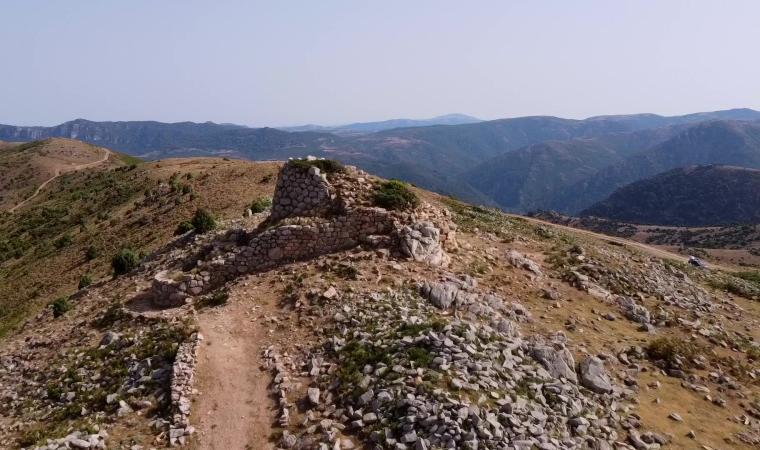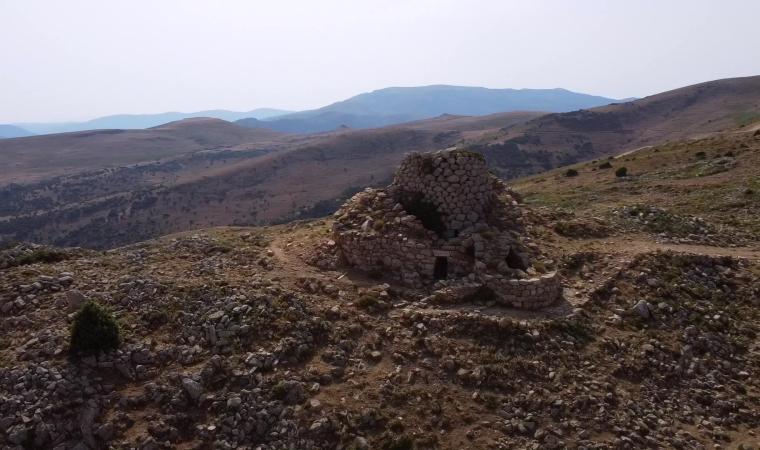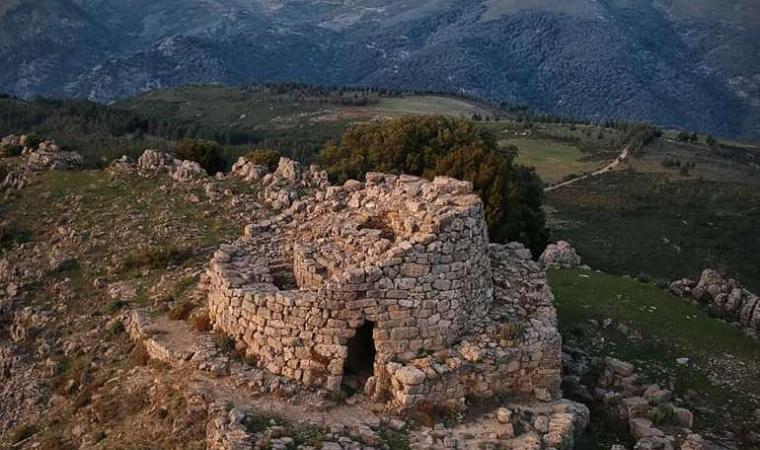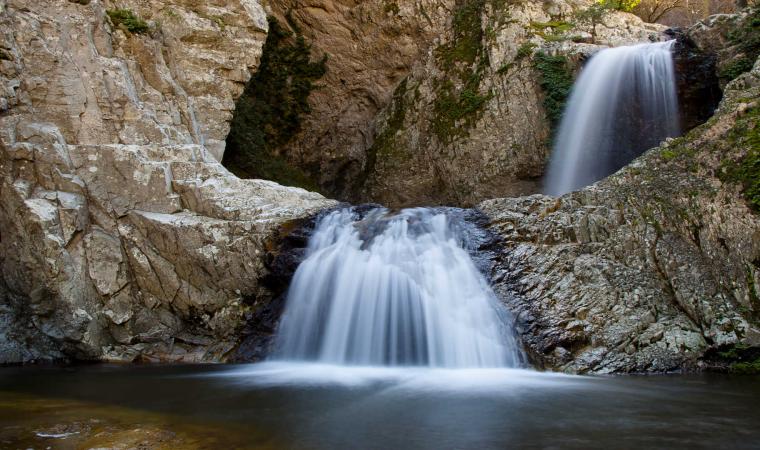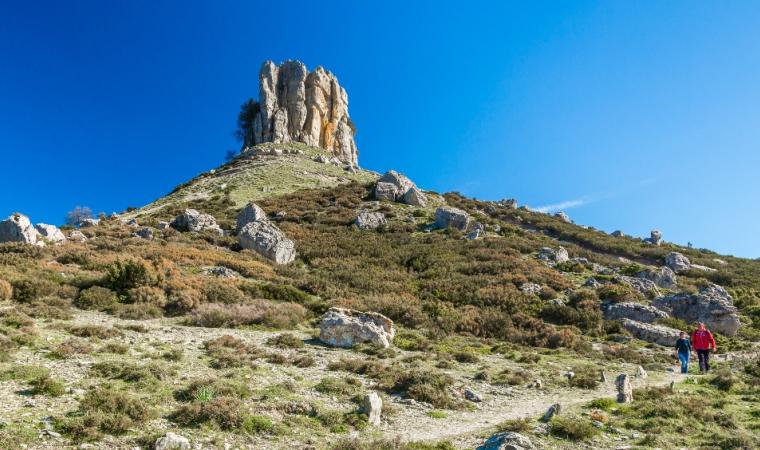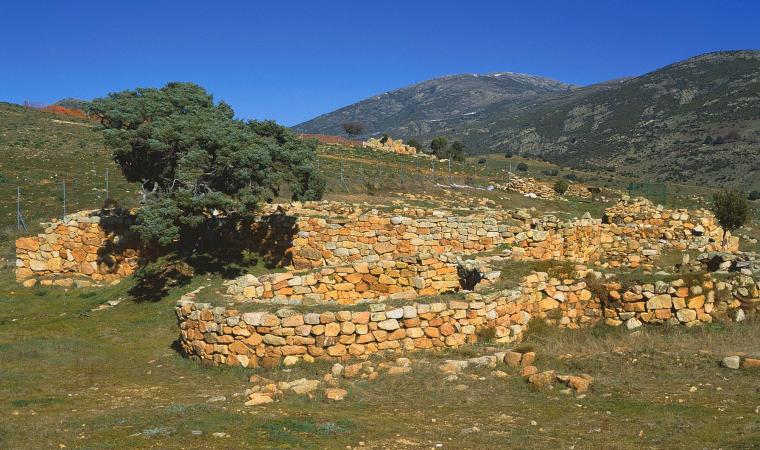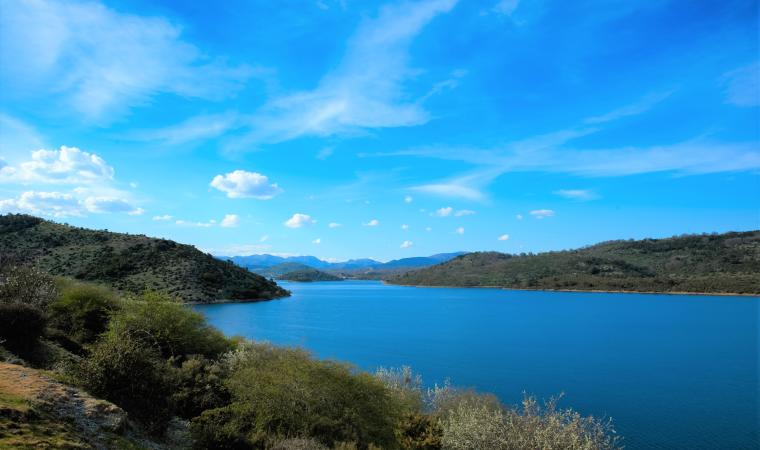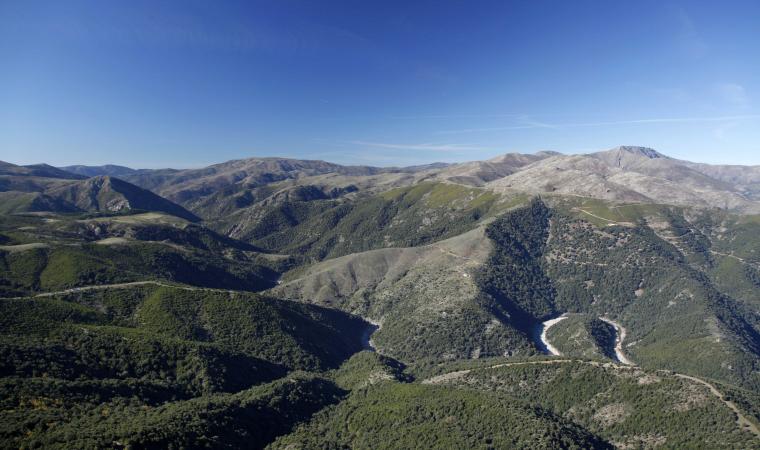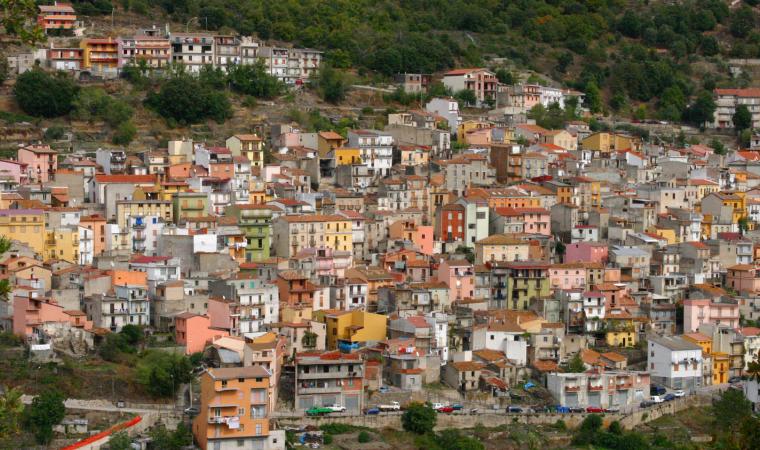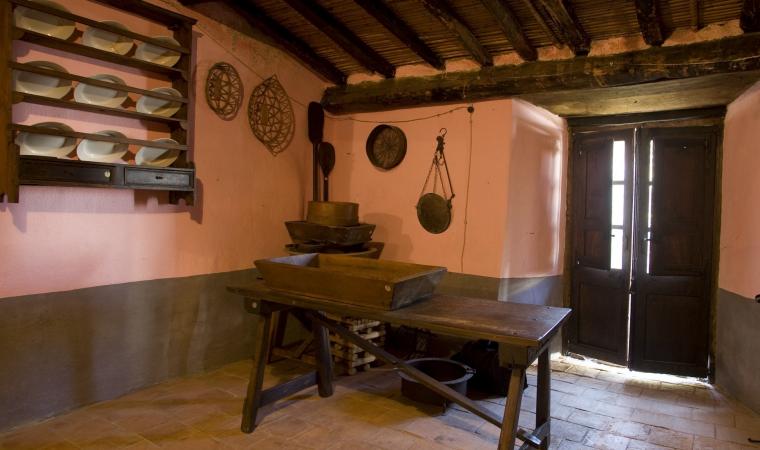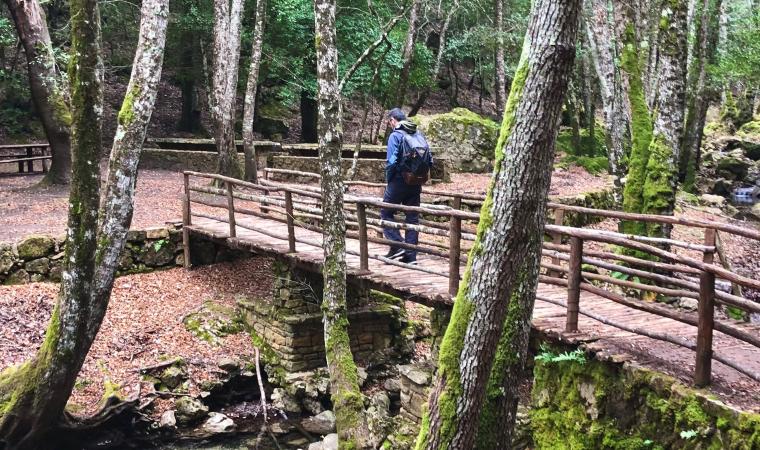It stands on the slopes of Gennargentu, at an altitude of about 1200 metres, asserting itself as one of the ‘highest’ Bronze Age settlements in Sardinia. Furthermore, the traces of the village that surrounds it tell a story steeped in legend. The nuraghe Ruinas is ‘immersed’ in a mountainous landscape in Arzana, not far from woods, waterfalls and springs. Orruinas – as it is called by the people of Arzana – must have been a particularly important settlement: in addition to the nuraghe, it also has a Giants’ Tomb, (perhaps) a sacred well and above all a vast village of which around 200 huts can be seen today, although it is assumed that there were originally many more of them. The nuraghe has a trefoil layout, with about 8 and a half metres of the height of the keep still standing and the tholos roof of the main chamber still remains, while to the left of the entrance you will see the staircase that led to the upper room, which later collapsed.
The towers on the sides show signs of renovation work: in one of them, the main room was ‘sacrificed’ to allow the construction of a boundary wall, while a small room was saved, from which there is a staircase that led both to the upper floor and to a walkway on the curtain wall that connected two towers. Between the bastion and the keep you will notice the courtyard, with an irregular layout.
The village extended around the nuraghe, with mainly circular structures and a rectangular building, which some interpret as a meeting hut, given its considerable size of twenty metres by thirty. A few hundred metres north of the nuraghe are the remains of the Giants’ Tomb of reference of the village. The settlement has yielded numerous artefacts, among which a bronze statue, 12 centimetres tall with its arms outstretched in front of it, stands out. Some findings have been dated back to the Imperial age, thereby testifying to continued human presence at least until a historical period that may even have been medieval. In fact, there is a legend linked to the village of Ruinas, according to which it existed until the beginning of the 15th century, only to be abandoned due to an epidemic of the plague. Its inhabitants are said to have been accommodated in Arzana, in the Preda 'e Maore district, and therefore the territory in which the site is located, over 30 kilometres from the inhabited area, was ‘claimed’ by the Ogliastra village.
Visiting Orruinas is an opportunity to combine archaeology and outdoor activities: a trekking trail of about seven kilometres starts from the site and heads north, reaching Punta la Marmora, the top of Gennargentu and the highest peak in Sardinia. During the journey, you will see ancient sheepfolds and animals in the wild, until you find yourself gazing at spectacular landscapes and enjoying a unique view.



